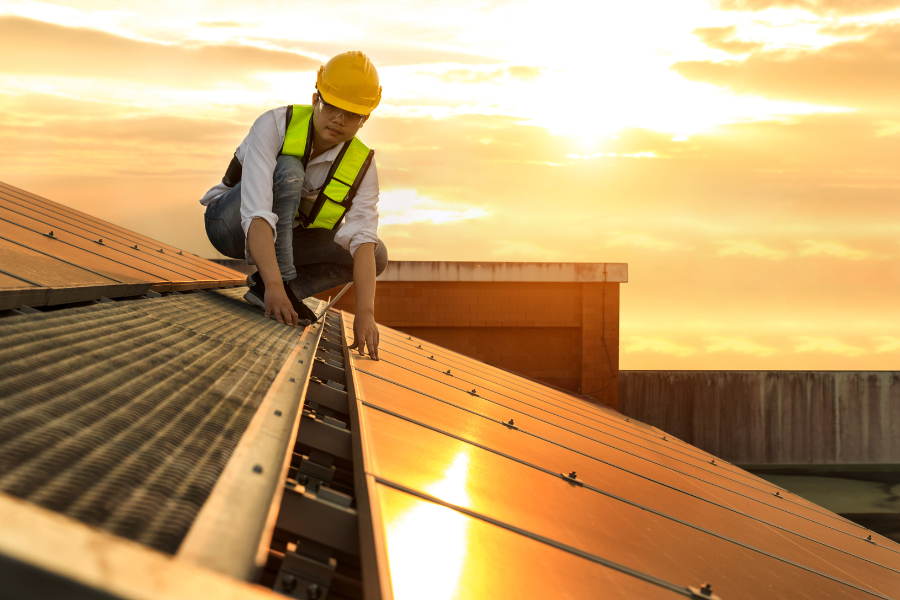Solar panel installation has become a popular choice for homeowners looking to reduce energy costs and minimize their environmental footprint. With advancements in solar technology and a growing awareness of the benefits, more people are considering making the switch. This guide will walk you through the essential aspects of solar panel installation, helping you make an informed decision for your home.
Understanding Solar Panel Technology
Solar panels, also known as photovoltaic (PV) panels, convert sunlight into electricity. The process involves semiconductor materials, typically silicon, which absorb photons from sunlight and release electrons, creating an electric current. Here’s what homeowners need to know about solar panel technology:
1. Types of Solar Panels: There are mainly three types of solar panels: monocrystalline, polycrystalline, and thin-film. Each type has its advantages and price points.
2. Efficiency Ratings: Solar panel efficiency indicates how well a panel can convert sunlight into usable electricity. Higher efficiency panels are usually more expensive but require less space.
3. Durability and Lifespan: Most solar panels come with a 25 to 30-year warranty, ensuring long-term performance and reliability.
Benefits of Solar Panel Installation
Installing solar panels offers numerous benefits for homeowners:
1. Cost Savings: Solar panels can significantly reduce your electricity bills. Over time, the savings can outweigh the initial installation costs.
2. Environmental Impact: Solar energy is a clean, renewable resource that reduces greenhouse gas emissions and dependence on fossil fuels.
3. Energy Independence: With solar panels, homeowners can generate their own electricity, reducing reliance on the grid and increasing energy security.
4. Increased Property Value: Homes with solar panel installations often have higher property values and are more attractive to buyers.
The Solar Panel Installation Process
Understanding the solar panel installation process can help you prepare and ensure a smooth transition to solar energy:
1. Site Assessment and Design: A professional solar installer will assess your roof’s condition, orientation, and shading to design an efficient solar system.
2. Permitting and Paperwork: The installer will handle necessary permits and paperwork, including applications for incentives and rebates.
3. Installation Day: The actual installation typically takes one to three days, depending on the system’s size and complexity.
4. Inspection and Connection: After installation, the system will be inspected and connected to the grid. The final step involves turning on the system and monitoring its performance.
Costs and Financing Options
The cost of solar panel installation can vary widely based on several factors:
– System Size and Type: Larger systems and higher-efficiency panels cost more but provide greater savings.
– Location: Installation costs can differ based on regional labor rates and local permitting fees.
– Incentives and Rebates: Many states and local governments offer incentives and rebates to reduce the upfront cost of solar panels.
Financing options can make solar panel installation more affordable:
– Cash Purchase: Paying for the system upfront offers the highest savings over time.
– Solar Loans: Loans allow homeowners to spread the cost over several years, often with low interest rates.
– Leases and Power Purchase Agreements (PPAs): These options involve no upfront costs, but savings are lower since the solar company owns the system.
Maintenance and Monitoring
Solar panels require minimal maintenance, but regular checks can ensure optimal performance:
– Cleaning: Dust, debris, and bird droppings can reduce efficiency. Cleaning the panels a few times a year can help maintain performance.
– Monitoring System Performance: Many solar systems come with monitoring tools that allow you to track energy production and identify issues.
– Professional Inspections: Annual inspections by a professional can help detect and address potential problems early.
Common Myths About Solar Panels
Despite the growing popularity of solar panels, several myths persist:
– Solar Panels Are Too Expensive: While the initial cost can be high, various incentives and financing options make solar panels more affordable than ever.
– Solar Panels Don’t Work in Cloudy or Cold Climates: Solar panels can still generate electricity on cloudy days and are effective in cold climates.
– Maintenance Is Too Complicated: Solar panels are low-maintenance and require minimal effort to keep them functioning efficiently.
Choosing the Right Solar Installer
Selecting a reputable solar installer is crucial for a successful installation:
1. Experience and Certifications: Look for installers with relevant experience and certifications from recognized organizations like the North American Board of Certified Energy Practitioners (NABCEP).
2. Customer Reviews and References: Check online reviews and ask for references to gauge customer satisfaction.
3. Warranty and Service: Ensure the installer offers comprehensive warranties and responsive customer service.
Key Considerations Before Installation
Before installing solar panels, consider the following:
1. Roof Condition: Ensure your roof is in good condition and can support the weight of solar panels.
2. Energy Needs: Evaluate your energy consumption to determine the appropriate system size.
3. Future Plans: If you plan to move in the near future, consider the impact on your investment.
Bullet Points: Key Takeaways
- Solar panels convert sunlight into electricity, reducing energy costs and environmental impact.
- Benefits include cost savings, energy independence, and increased property value.
- The installation process involves site assessment, permitting, and professional installation.
- Costs vary, but incentives and financing options make solar more accessible.
- Maintenance is minimal, and monitoring tools help track performance.
- Debunking common myths can help make an informed decision.
- Choosing a reputable installer ensures a successful and reliable installation.
Comparison of Solar Panel Types
| Type | Efficiency | Cost | Durability |
|---|---|---|---|
| Monocrystalline | High | Higher | Long-lasting |
| Polycrystalline | Medium | Moderate | Long-lasting |
| Thin-film | Low | Lower | Shorter lifespan |
Contact Us
For more information about solar panel installation and to get started on your journey to clean energy, Contact US Electric at:
Phone: 732-646-4454
Email: info@use-corp.com
Solar panel installation is an investment that pays off in reduced energy bills, environmental benefits, and increased home value. By understanding the technology, benefits, and installation process, homeowners can make an informed decision and enjoy the many advantages of solar energy.


